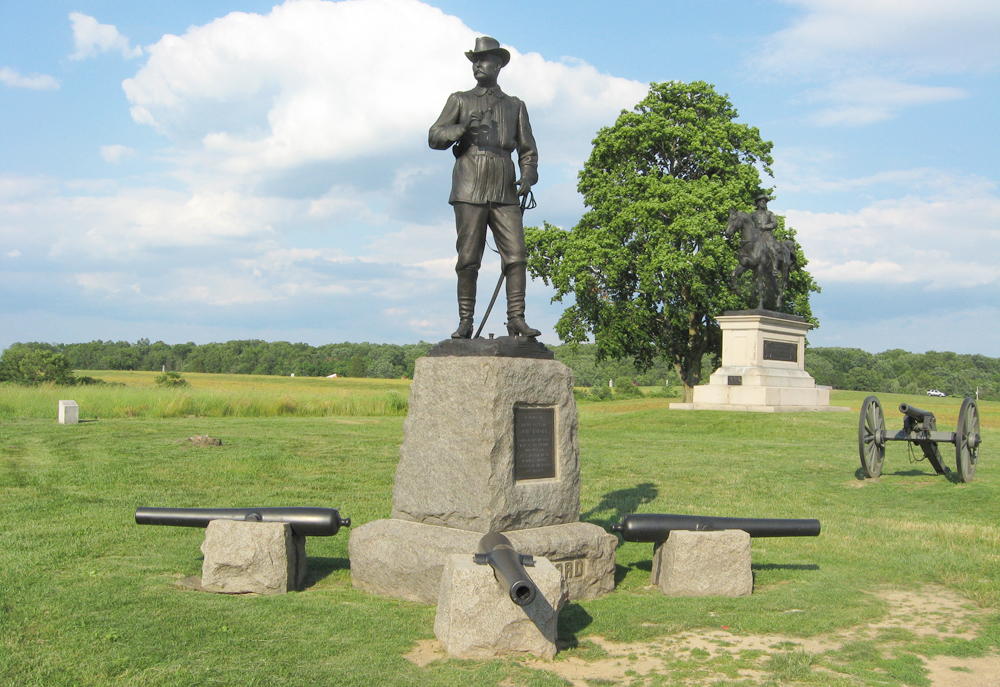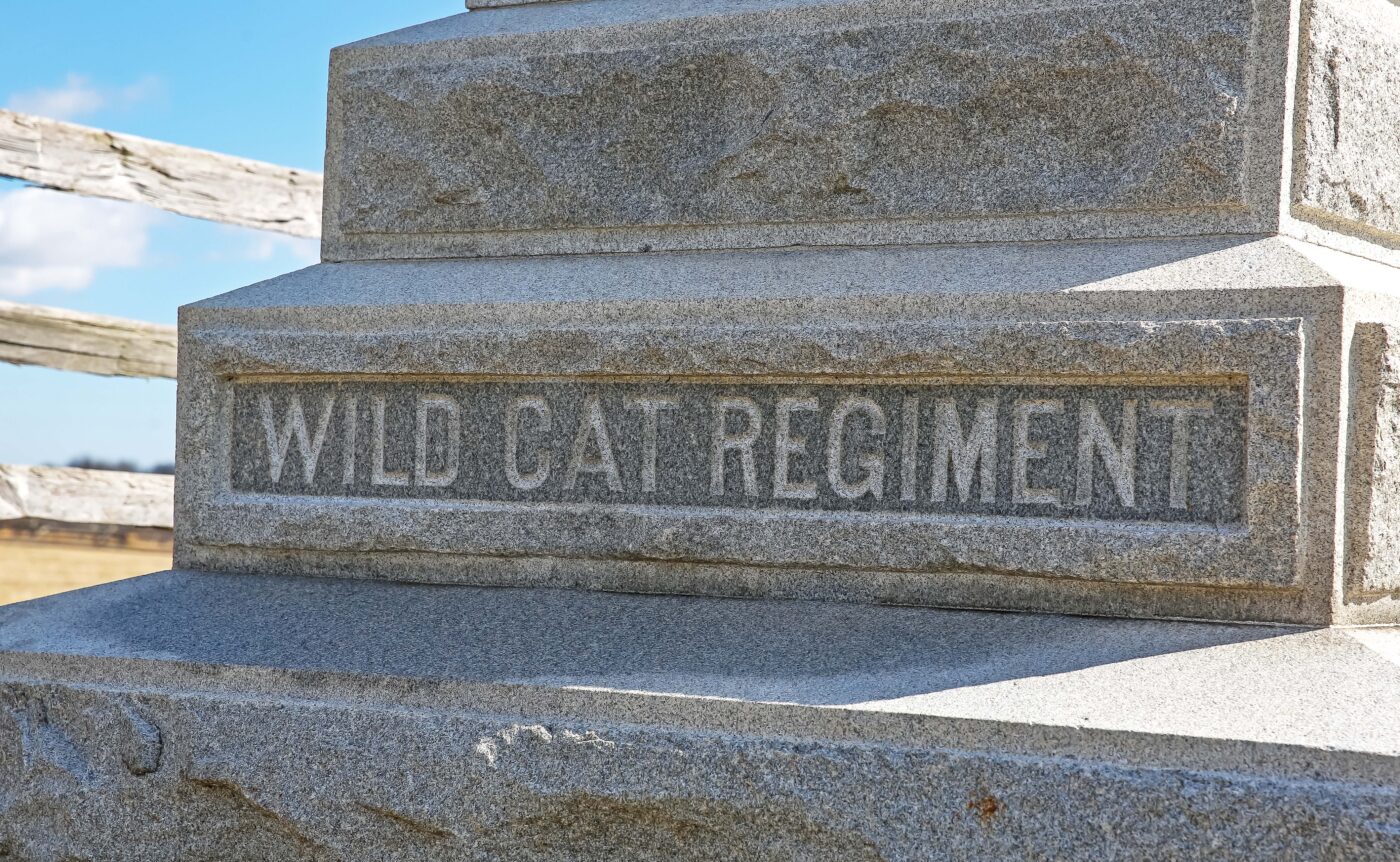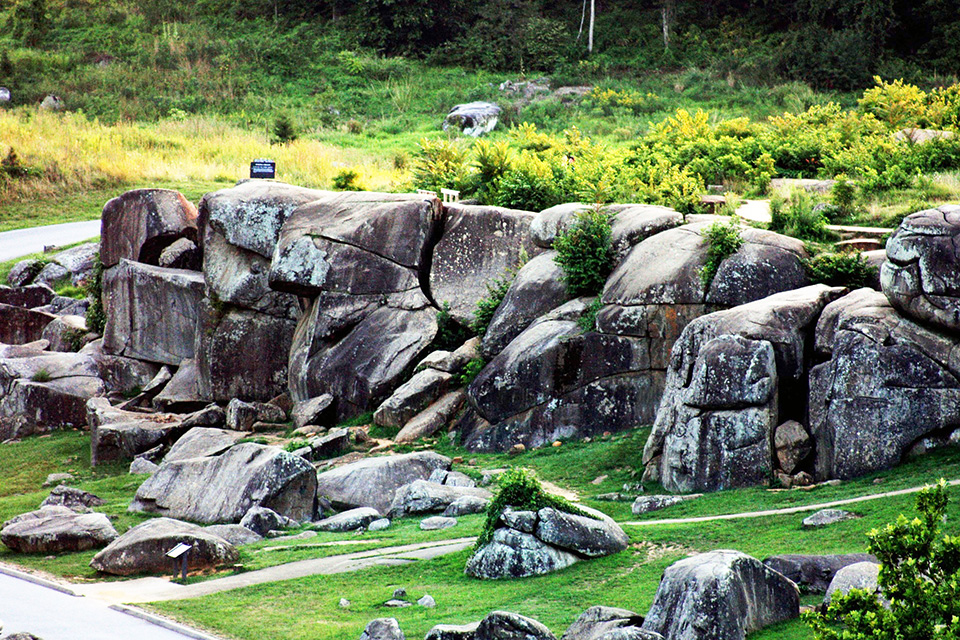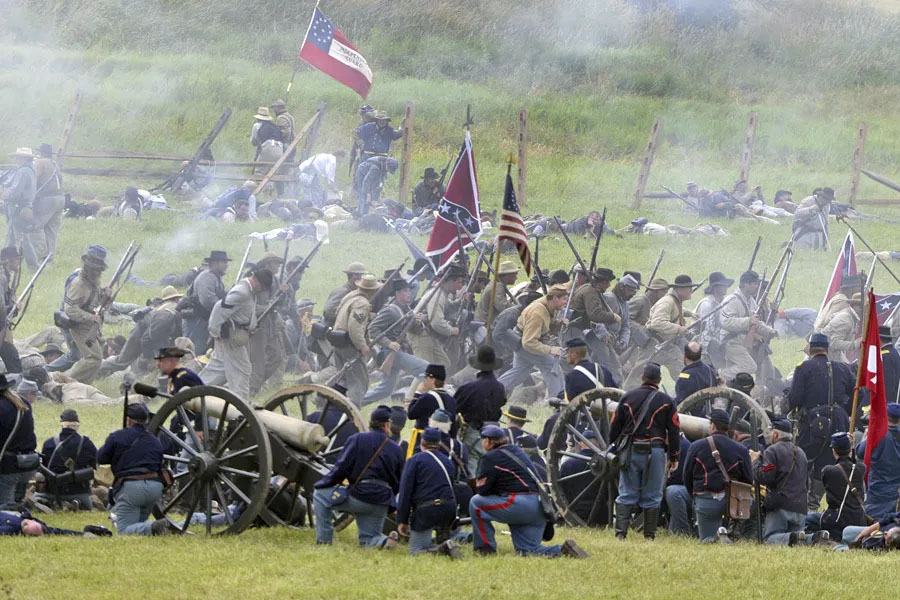Category: Monuments

Battlefield Highlights: Where the Battle Began – Buford Holds The High Ground
May 30, 2023Have you ever wondered about the pivotal moments that shaped the outcome of the American Civil War? One such moment occurred on the first day of the Battle of Gettysburg.
General John Buford’s actions on that first day at Gettysburg were crucial in determining the final outcome of the battle. By holding the line against Confederate forces, he helped buy time for the Union army to reinforce its position, an action that ultimately determined the course of the entire conflict.

Pennsylvanian Wild Cats at Gettysburg
March 15, 2023During the Civil War, many different brigades and regiments had unique names. Some of the more famous ones we often hear about in association with Gettysburg are The Iron Brigade and the Louisiana Tigers. But one particular regiment that fought at Gettysburg was given a nickname that not only sounds cool but which also has an interesting origin behind it.

The Devil’s Den: Exploring the Key to Little Round Top
January 28, 2023One of the most famous battlefield locations at Gettysburg is Devil’s Den, a boulder-strewn hill rock formation located on the southmost end of Houck’s Ridge, about 500 yards west of the hill known as Little Round Top. Used extensively as a firing position by artillery and sharpshooters on the second day of the Battle of Gettysburg, it was the scene of some of the bloodiest fighting of the war and is an important stop on battlefield tours of the area.

The High-Water Mark: Revisiting a Pivotal Moment of the Battle of Gettysburg
July 19, 2022What is the High-Water Mark?
The High-Water Mark of the Confederacy or “high tide of the Confederacy” refers to an area on Cemetery Ridge near Gettysburg, Pennsylvania, marking the farthest point reached by Confederate forces during the action known as Pickett’s Charge on July 3, 1863. Like a high-water mark denoting a level of water, the term is a reference to arguably the Confederate Army’s best chance of achieving victory in the war. The designation “High-Water Mark” was formally evoked by historians in the years following the Civil War, based on the idea that the battle of Gettysburg was the turning point of the war.
26th North Carolina Infantry
March 10, 2016 Many visitors that come to Gettysburg question why there are so few confederate markers on the field. There are a number of reasons – #1 it was a confederate defeat #2 after the war the South was unable to financially channel many funds toward memorials and #3 the North plain & simple really didn’t want them here.
Many visitors that come to Gettysburg question why there are so few confederate markers on the field. There are a number of reasons – #1 it was a confederate defeat #2 after the war the South was unable to financially channel many funds toward memorials and #3 the North plain & simple really didn’t want them here.
One of the few markers here at Gettysburg that honors Confederate soldiers can be found on Meredith Ave. in Reynold’s Woods & belongs to the 26th North Carolina Infantry. Engaged with the Union Iron Brigade on July 1st, this unit suffered very heavy casualties. They would lose a total of 588 men which would be the greatest numeric loss of any Confederate unit during the battle. They would also participate in Pickett’s Charge on July 3rd & a companion marker can be found at the Angle which notes their position on that day.
Their memorials were dedicated on October 5, 1985.
John Buford Memorial
January 5, 2016 The three thousand cavalry troopers led by John Buford on the first day of Gettysburg were tasked with slowing down the Confederate advance long enough for Union reinforcements to arrive on the field. The combination of skill and luck used by General Buford successfully blunted the advance of Heth’s division on McPherson’s Ridge and contributed greatly to eventual Union victory at Gettysburg.
The three thousand cavalry troopers led by John Buford on the first day of Gettysburg were tasked with slowing down the Confederate advance long enough for Union reinforcements to arrive on the field. The combination of skill and luck used by General Buford successfully blunted the advance of Heth’s division on McPherson’s Ridge and contributed greatly to eventual Union victory at Gettysburg.
Born in Kentucky, General Buford’s promising military career was cut short when he came down with typhoid fever in the autumn of 1863. This illness resulted in his passing in December of the same year.
The Buford Memorial Association was formed in 1888 with the mission of erecting a suitable memorial on the field.
Located on the Chambersburg Pike, the John Buford Memorial was dedicated on July 1, 1895.
Surrounding the base are four Ordnance Rifles, the kind which were used in a Horse Artillery Battery. Among these guns is to be found number 233 and according to John Calef who commanded such a battery under Buford’s command, this was the gun that fired the very first Union artillery shot of the battle.
Portrait Statue of General Gouverneur K. Warren
October 6, 2015 Known as the “Savior of Little Round Top”, the portrait statue of General Gouverneur K. Warren was dedicated on August 8, 1888 & was the first statue to a New York commander at Gettysburg.
Known as the “Savior of Little Round Top”, the portrait statue of General Gouverneur K. Warren was dedicated on August 8, 1888 & was the first statue to a New York commander at Gettysburg.
The General is standing atop the boulder from which he noticed the Confederate advance on July 2nd. At the time, Little Round Top had been left almost completely unoccupied with the exception of a few signalmen who were preparing to leave. Recognizing the importance of the hill, General Warren instructed the signalmen to remain to give the impression of occupation while he sent aides off to secure immediate reinforcement. This prompt action allowed the hill to remain in Union hands.
All the funds needed for the construction of this memorial were privately raised.
New York State Monument
August 13, 2015 In 1886 only two New York State monuments had been erected on the fields of Gettysburg. Those two being the 14th Brooklyn & the 124th New York with neither of these two representing the City of New York.
In 1886 only two New York State monuments had been erected on the fields of Gettysburg. Those two being the 14th Brooklyn & the 124th New York with neither of these two representing the City of New York.
Veterans of the 83rd New York Infantry had a site chosen & a committee selected to watch over the construction – all they needed now were the funds to begin. Friends & survivors of the regiment were solicited for contributions & by Sept. 1887, almost $3500.00 had been collected.
Dedicated on July 1, 1888 – the monument to the 83rd New York was to become one of the single largest memorial dedications the battlefield would see. It was attended by veterans of the unit itself, plus other members of the First Corps, ranking officers from the battle & the entire 9th New York National Guard which was sent by the Governor of the State.
The memorial is a fifty-one foot tall shaft on levels of red & white granite. On top is a bronze cannonball & eagle. The eagle weighs in at 700 pounds & has a wing span of almost six feet.
The regimental badge can be found at the base with the motto “Ratione Aut Vi,” which means “By Reason or Force.”
Tennessee State Memorial
July 9, 2015The Tennessee State Memorial is the last of the southern states at Gettysburg to place a monument on the field. It is also the only state memorial built exclusively with private contributions.
Dedicated on July 2, 1982 at a cost of $25,000.00 this marker can be found on West Confederate Avenue.
Three Tennessee regiments took part in the battle & they are represented by the three soldiers etched into the face of the monument. Three stars on top symbolize the three geographic divisions of the state: eastern, central & western Tennessee. An outline of the State is cut into the 16 foot long base. Sixteen feet representing the fact that Tennessee was the 16th State to enter the Union.
John Burns Memorial
May 18, 2015 On the afternoon of July 1, 1863, wearing a vest, dark coat & trousers & a high silk hat the only Gettysburg civilian known to have participated in the battle reported to Colonel Langhorne Wister of the 150th Pennsylvania Infantry & requested permission to join the fight. A veteran of the War of 1812, John Burns fought side by side with several Union regiments that day. His actions earned him the respect of the soldiers he fought alongside with. He was wounded three times & had to be carried from the field.
On the afternoon of July 1, 1863, wearing a vest, dark coat & trousers & a high silk hat the only Gettysburg civilian known to have participated in the battle reported to Colonel Langhorne Wister of the 150th Pennsylvania Infantry & requested permission to join the fight. A veteran of the War of 1812, John Burns fought side by side with several Union regiments that day. His actions earned him the respect of the soldiers he fought alongside with. He was wounded three times & had to be carried from the field.
Burns recovered from his wounds & for the remaining years of his life was a local hero.
The Pennsylvania General Assembly elected to honor this man’s memory by erecting a memorial near the site of his service at the McPherson Farm.
The memorial was dedicated on July 1, 1903 & inscribed at the base are the words used by General Doubleday in his official report commending the heroism of this local citizen.